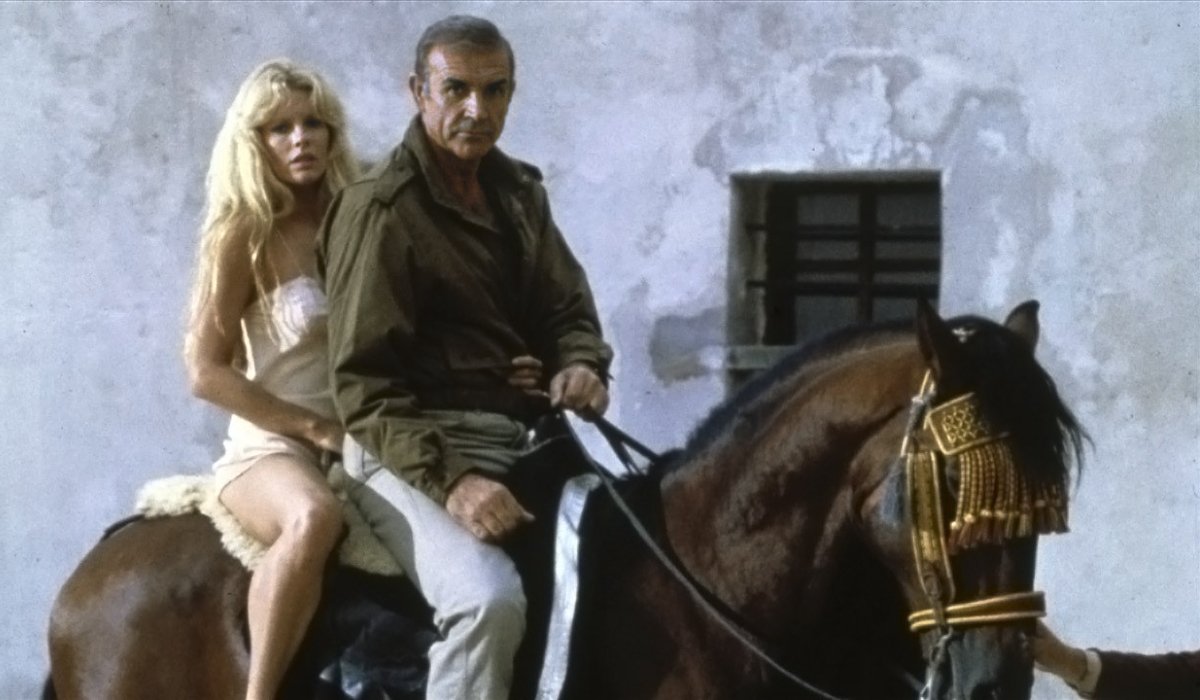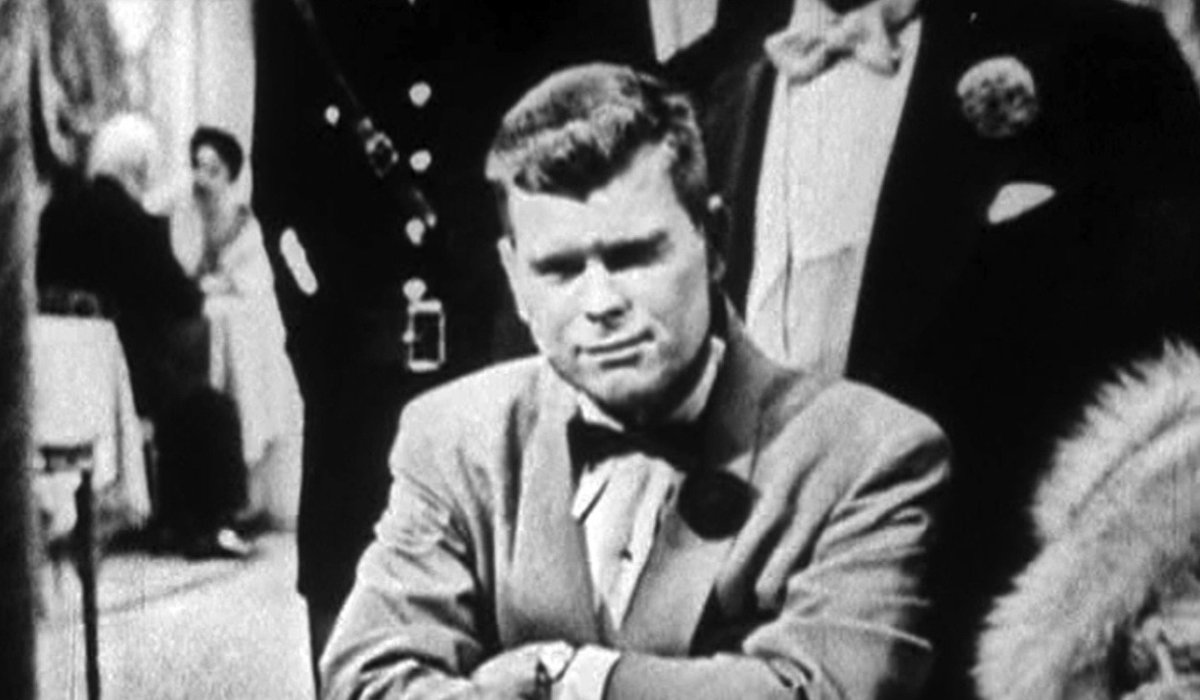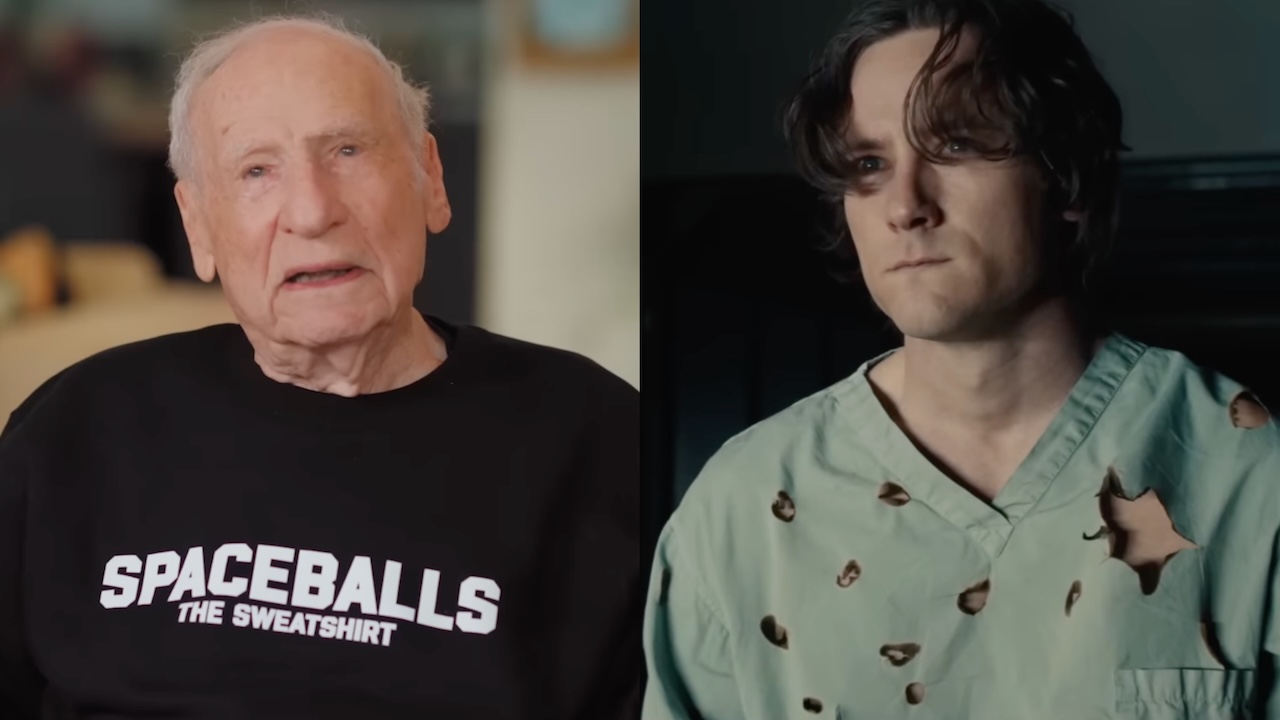Not Quite 007: Breaking Down All The Non-EON James Bond Movies

When you talk about a film series like the James Bond movies, it’s easy to get confused about where some things belong. Most often, and most noticeably, three particular projects are thrown into the conversation involving the 007 franchise; and all three don’t belong, as they aren’t official EON Productions entries.
Two different adaptations of Ian Fleming’s first James Bond novel, and one very personally motivated unofficial remake, are what make up the films that have confounded fans for decades. Once and for all, let’s take a look at these projects, discuss why they aren’t canon, and even pick over the finer points of what make them good and bad as individual 007 knockoffs.

Casino Royale (1954)
Before any of EON Production’s James Bond film got off the ground, TV was the venue of choice for 007 to get his start in the pictures. The CBS live drama series Climax! had the distinct honor of bringing Casino Royale to life for the first time, albeit with massive changes and a running time limited to an hour.
Why Casino Royale '54 Is Not Canon
The most obvious reason Casino Royale ’54 isn’t part of the EON Productions canon is because, quite simply, the episode predates the efforts and existence of Albert R. Broccoli and Harry Saltzman’s company by about seven years. Also, with James Bond being turned into Barry Nelson’s “Combined Intelligence Agency” operative, and a lot of characters/events consolidated or omitted from Ian Fleming’s novel, this is a Bond adventure in name only.
The Good Parts Of Casino Royale '54
While it’s solely focused on James Bond’s time at Casino Royale, and mostly centered around the high stakes Baccarat game against Le Chiffre (Peter Lorre), this Climax! episode does a pretty good job of telling a 007 story without any reference points to go on. Nelson’s “Card Sense Jimmy Bond” and Lorre’s Le Chiffre are worthy adversaries, and the dramatic tension in this version is so pulpy and noir, it actually feels closer to Ian Fleming’s works than some of the efforts that would follow.
Your Daily Blend of Entertainment News
The Bad Parts Of Casino Royale '54
Rather than adapt the cruelly tragic love story of Vesper Lynd and James Bond, Casino Royale ’54 plays for straight romance, with a happy ending. In this case, Bond and his love interest, the newly spun Valerie Mathis (a re-writing of Rene Mathis from the source novel) find themselves as old lovers, thrown together by fate and adversity after some time apart. The adventure ends with Valerie not only surviving, but embracing James, as the story ends.

Casino Royale (1967)
Right as Albert R. Broccoli and Harry Saltzman were getting ready to start the James Bond film franchise, producer Charles Feldman was the rights holder to Casino Royale’s potential movie version. When he couldn’t make a deal with EON Productions, Feldman eventually made his own version, which started as a serious adaptation, but eventually morphed into a raucous comedy free-for-all.
Why Casino Royale '67 Is Not Canon
Not only did EON Productions not own the rights to Ian Fleming’s Casino Royale, but as the film’s opening credits read, the eventual story was “suggested by” Fleming’s novel to begin with. Everything from the actual James Bond being a retired gentleman of proper nature, to the shenanigans involving multiple agents being named “James Bond/007,” took selected elements of the novel and incorporated them into the film eventually released by rival studio Columbia Pictures.
The Good Parts Of Casino Royale '67
For as outrageous as Casino Royale ’67 is, there are definitely some aspects that stand out as fairly respectable. If Peter Sellers was allowed to play the straight portrayal of Bond he wanted to, before he walked out on the production, there could have been potential for a decent competitor. Pieces of the film’s comedy components work as well, as David Niven’s proper nature set against the wild and swinging ‘60s make for a striking antithesis of the Bond that was in theaters through EON Production’s own auspices.
The Bad Parts Of Casino Royale '67
By time you reach the end of Casino Royale ’67, you’re either on board with a gigantic, unfocused set-piece pitting secret agents against extras from a Western, or you’re not. And even if you’re in on the gag, this comes at the expense of a wildly sloppy story that saw six directors and numerous writers try to salvage the mess that was made. The stories surrounding this movie can, and should, be told another day; but the short, short version of why this production was so bad is because the behind the scenes troubles were so great, they overruled any chance of a cohesive story.

Never Say Never Again (1983)
With a contentious lawsuit ensuring that the character Ernst Stavro Blofeld, the organization of SPECTRE, and the story of Thunderball were the rightful creations of writer Kevin McClory, the threat of a remake was something that would revisit the EON Productions franchise for some time. And the one time it actually came to fruition was through the 1983 film Never Say Never Again.
Why Never Say Never Again Is Not Canon
As the story and characters of McClory’s credited creation were allowed to be used in this movie, directed by The Empire Strikes Back’s Irwin Kirshner, the production was a rival remake of Kevin McClory’s design. Opening the same year that EON Production’s Octopussy would see Roger Moore’s official Bond return to action, this Sean Connery enhanced contender was a retread of Thunderball’s story, and also admitted a degree of continuity in the Bond series.
The Good Parts Of Never Say Never Again
As far as 007 imitations go, Never Say Never Again had a structure to adhere to, as well as a consistent creative team that allowed for the experience to go off without a hitch. It’s not an official Bond film, but it aims to be as close to the real thing as possible, with Connery’s charm helping hammer home the formula. Even when the movie is trying to appeal to younger audiences where Octopussy might not have, especially with the inclusion of a video game based set-piece, there’s still an air of respectability about.
The Bad Parts Of Never Say Never Again
Four words could sum up the huge point this James Bond imitation is trying to get across: “James Bond Is Old!” While this film is mostly a serious take on an aging 007 in the field, Never Say Never Again lacks any other interesting twists on the story already told in Thunderball. There’s no over the top zeal or pulse pounding action to be had, just action scenes that drag on and a diabolical plot that lacks zest. Kevin McClory may have owned the story, but Ian Fleming certainly owned the character traits that made James Bond the super-agent everyone knows and loves.

Which Non-EON James Bond Movie Is The Best?
Without question, the 1954 TV adaptation of Casino Royale is the best non-EON Productions variant of James Bond. Blazing a trail for 007 adventures to come, the project succeeded at laying down the groundwork for the eventual tried and true precedent that Albert R. Broccoli and Harry Saltzman’s films would eventually shape into a decades long franchise of hits.
Though the romantic angle helps make Casino Royale ’54 a bit of an odd man out in the entire series, it’s not an entirely off-base decision. For a one-off adventure, allowing James Bond to be happy for once is still a bit refreshing, even if it’s the more maudlin choice. Even with its rough, limited production charms, Casino Royale ’54 applies the pressure where it counts, and has a killer Peter Lorre performance to top it all off.

Which Non-EON James Bond Movie Is The Worst?
Even with its polished product, the groundbreaking first casting of a Black actor as Felix Leiter decades ahead of Casino Royale ’06, and especially the presence of Sean Connery, Never Say Never Again is, comparatively, the worst of the non-EON canon of 007 films. While Casino Royale ’67 is definitely a mess, it tried to take the James Bond formula and spoof it to great effect.
In that respect, to be so ahead of the curve on parodying the Bond series, as well as acting like a perfect prototype for the Austin Powers series, that particular film still holds a purpose. All Never Say Never Again did was remake a golden age Bond movie, with certain restrictions that prevented it from ever feeling like a true adventure worthy of even Connery’s talents. If you’ve seen Thunderball, you’ve seen Never Say Never Again. All you’re really missing are jokes about James Bond’s age, and a power play surrounding a literally painful ‘80s video game.
Almost six decades have seen the James Bond legacy play out on the big screen, and with this year’s No Time To Die, 25 movies will make up the official run of 007 projects under EON Productions. While these three pictures aren’t part of the official canon, they each have something interesting to say about the impact that lasting franchise has had on moviemaking at large.

Mike Reyes is the Senior Movie Contributor at CinemaBlend, though that title’s more of a guideline really. Passionate about entertainment since grade school, the movies have always held a special place in his life, which explains his current occupation. Mike graduated from Drew University with a Bachelor’s Degree in Political Science, but swore off of running for public office a long time ago. Mike's expertise ranges from James Bond to everything Alita, making for a brilliantly eclectic resume. He fights for the user.


